FRET Peptides, Native Substrates & Receptors
The potent toxicity of both the botulinum neurotoxins and anthrax lethal toxin is due to a zinc-dependent proteolytic activity associated with the toxins. Measurement of this enzymatic activity provides for both a potentially sensitive and direct means for detection of the toxin, and a method for identifying potential toxin inhibitors using high throughput screening. A highly efficient approach for monitoring enzymatic activity is based on the use of fluorescence resonance energy transfer (FRET) substrates. These fluorogenic peptides contain a donor fluorescent group at one end and a suitable chromogenic acceptor group at the other. The fluorescence is quenched initially by intramolecular energy transfer between the donor/acceptor pair. Cleavage of the FRET substrate by the appropriate enzyme releases the fluorophore and full fluorescence is restored. The increase in fluorescence intensity is directly proportional to the amount of enzyme present. Enzymatic activity can be monitored continuously by recording the increase in fluorescence intensity with time. The change in the relative fluorescence units (RFU) as cleavage occurs can be converted to nmoles of cleaved substrate from a standard curve generated using a Calibration Peptide which is the cleaved substrate containing only the N-terminally attached fluorophore. For Botulinum neurotoxin type A, a Control FRET peptide substrate that is not cleaved by the neurotoxin but contains all remaining non-specific sites in the sequence can be used to screen background cleavage of the substrate that can occur in complex matrices.
There are seven immunologically distinct botulinum neurotoxins, designated serotypes A-G. Each neurotoxin cleaves one of two target proteins critical for synaptic vesicle fusion to the plasma membrane and neurotransmitter release, either SNAP-25 or Synaptobrevin. The latter is also called VAMP-2. Types A, C and E specifically bind and selectively cleave SNAP-25 while types B, D, F and G cleave Synaptobrevin. Type C also cleaves Syntaxin. The FRET peptides are based on the sequences of these native substrates. The enzymatic activity of these toxins can also be measured using the appropriate native substrate and monitoring the generation of the cleaved product on SDS-PAGE gel electrophoresis.
The synaptic vesicle glycoprotein 2c (SV2c) has been shown to be the protein receptor for Botulinum neurotoxin, Type A (BoNT/A) and the luminal domain loop is the specific location of BoNT/A binding. This 124-amino acid domain of SV2c is available as a GST fusion protein.
Substrates, both FRET peptide and native, available from List Labs for use with Botulinum toxins are shown in the table below. Also shown is the protein receptor for BoNT/A.
Peptides, Native Substrates and Receptor for use with Botulinum Toxins and Tetanus Toxin
List Labs offers two FRET peptide substrates for the Anthrax enzyme, lethal factor (LF). These LF substrates can be used for screening of LF inhibitors, which are potential therapeutic agents. Also, a fluorescently-labeled LF substrate has been designed which is highly specific for LF in complicated matrices including serum and plasma. Lethal factor is present at high levels early in an anthrax infection. This peptide substrate allows for a highly sensitive, rapid, and specific detection method to determine infection. A quick diagnosis and initiation of therapy is critical for successful treatment of the disease. LF peptide substrates and related products are shown in the table below.
Peptides for use with Anthrax Toxin, Lethal Factor
Showing 1–12 of 15 results
-
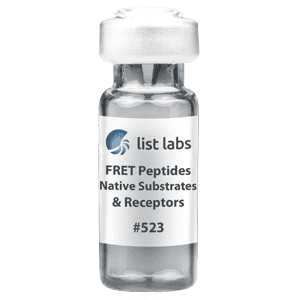
SNAPtide® Peptide Substrate flP6(DABCYL/5-IAF) for C. botulinum Type A Neurotoxin
#523 (200 nmoles)
-

VAMPtide® (Pya/Nop) Peptide Substrate for Botulinum Neurotoxin Type B
#542 (200 nmoles)
-
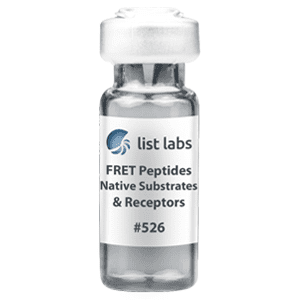
Control Peptide for SNAPtide® 521 for C. botulinum Type A Neurotoxin
#526 (200 nmoles)
-
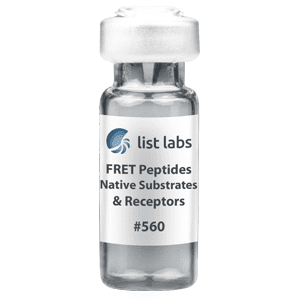
SYNTAXtide® (o-Abz/Dnp) Peptide Substrate for C. botulinum Type C Neurotoxin
#560 (200 nmoles)
-
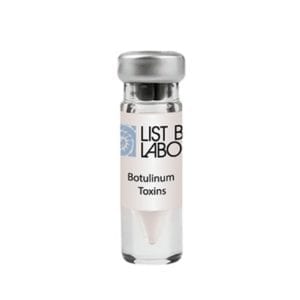
Unquenched Calibration Peptide for SNAP Etide® Prod #550
#559 (50 nmoles)
-
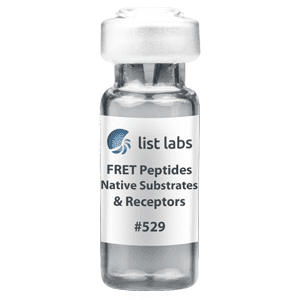
Unquenched Calibration Peptide for SNAPtide® 520 Substrate for C. botulinum Type A Neurotoxin
#529 (50 nmoles)
-
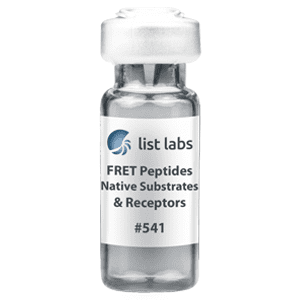
VAMPtide® Peptide Substrate (FITC/DABCYL) Substrate for C. botulinum Type B Neurotoxin
#541 (200 nmoles)
-
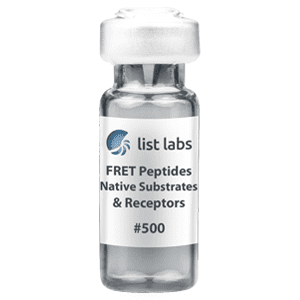
SNAP-25 Recombinant Protein Substrate for C. botulinum Types A and E Neurotoxin
#500A (100 ug)
-
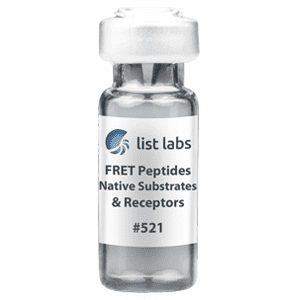
SNAPtide® Peptide Substrate (FITC/DABCYL) for C. botulinum Type A Neurotoxin
#521 (200 nmoles)
-
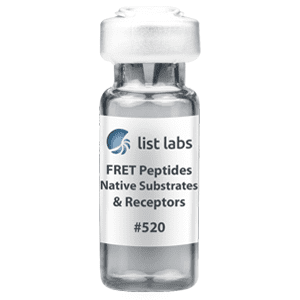
SNAPtide® Peptide Substrate (o-Abz/Dnp) for C. botulinum Type A Neurotoxin
#520 (200 nmoles)
-
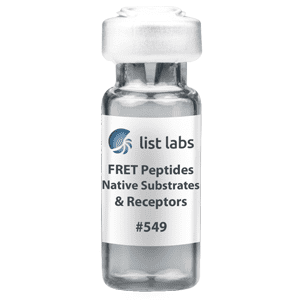
Calibration Fluorophore for VAMPtide® 540 Substrate for C. botulinum Type B Neurotoxin
#549 (100 nmoles)
-
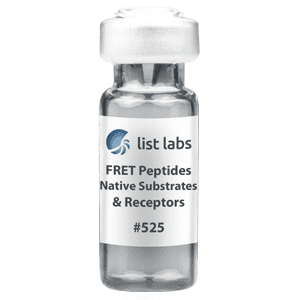
Control Peptide for SNAPtide® 520 Substrate for C. botulinum Type A Neurotoxin
#525 (200 nmoles)


